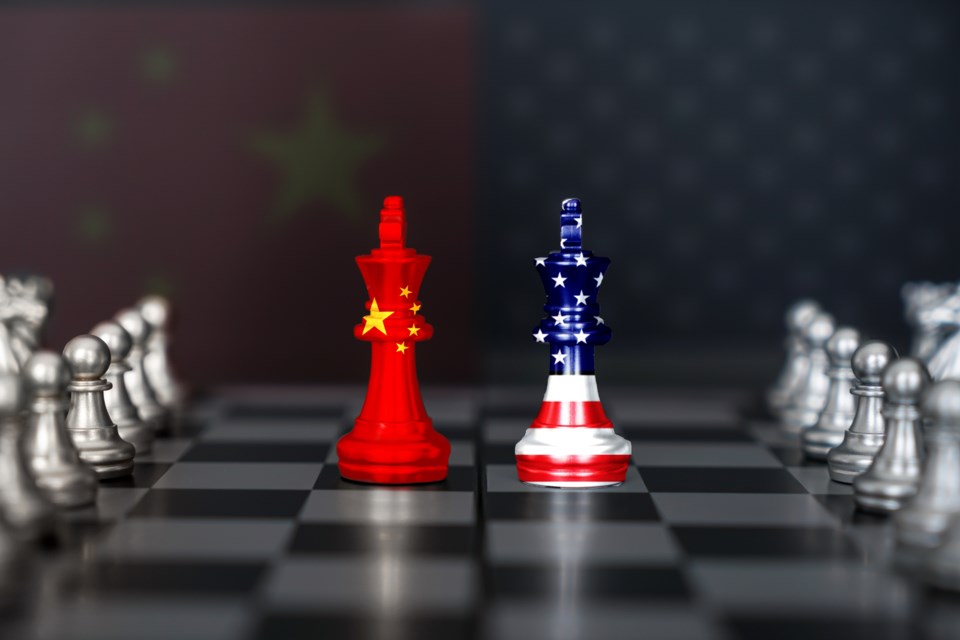Canada’s relationship to China has suffered due to the . The COVID-19 pandemic has also made it very clear that a reliance on Chinese suppliers — for companies everywhere — can have disastrous consequences when these .
In this challenging and uncertain time, many companies are trying to reorganize their supply chains and reduce dependencies that are vulnerable to .
While the pandemic — for example by increasing their number of suppliers — business leaders must now start thinking about the long-term implications of increased uncertainty in the markets since volatility is likely here to stay.
Our ongoing research suggests two factors are most important when making decisions on how to respond to the U.S.-China trade war: location and supply chain dependence, and technology.
Ending dependence on two fronts
The first factor deals with how much dependence companies have on Chinese suppliers and customers. China offers a uniquely complete and that fuels high demand for almost any good.
According to a United Nations report, China is home to almost every industry and its companies offer almost the in each of these industries.
The second factor is technology dependence. In some industries, blazing a trail on the technology frontier is key to success. North America is still the (including , and ) and it’s increasingly concerned about its intellectual property falling into Chinese hands.
Recent restrictions on Chinese researchers in Canadian universities are one example of spurred by these concerns.
In the future, companies that deal with North American technologies in cutting-edge areas will probably have to avoid delivering to China or using this technology in collaborations with any Chinese companies.
Low vs. high Chinese dependence
Companies with different degrees of dependence on Chinese supply chains and North American technologies are likely to behave very differently. We walk through the four scenarios.
Companies with low reliance on both North American technology and Chinese supply chains tend to relocate their manufacturing facilities to a third, low-wage country, because it’s easy to find alternative production sites and to access technology.
, offering digital signage and hospitality displays, is an example. Samsung’s reliance on Chinese supply chains is low because it owns a relatively complete supply chain ranging from upstream activities (inputs to products, such as chip design) to downstream activities (outputs such as products, like smartphones).
In short, Samsung designs, manufactures and markets its own products. The reliance on North American technology is also low because the technology required to produce display devices is not limited to North America. As a result, Samsung has shifted its manufacturing of IT and mobile displays from China to India, .
But companies with high dependence on Chinese supply chains could have a hard time leaving China. Take Google’s Pixel phone as an example.
In 2019, Google decided to relocate the manufacturing of the Pixel phone from China to to avoid tariffs into the U.S., an important market for its phones. Two years later, Google reversed the decision and started producing the new smartphone in China due to supply chain problems amid increasing .
Relocations to North America
Companies with a high reliance on North American technology and a relatively low reliance on Chinese supply chains, on the other hand, are likely to relocate manufacturing to North America.
For instance, , uses substantial American technologies and equipment, including advanced equipment for . Therefore, the Taiwanese company decided to build a new , a decision closely connected to its dependence on both U.S. technology and customers.
Companies with high reliance on both North American technology and the Chinese supply chain face the biggest challenges. They have no choice but to keep operating in both countries while navigating political risks and market turbulence.
Tesla is a prime example. While dependent on its research and development in the U.S. to enhance its leading technology position, China’s supply chain benefits Tesla with manufacturing speed, cost and proximity to the Chinese market. That leaves companies like Tesla with no choice but to navigate political tensions and stay present in both markets.
As a result, Tesla has built and expanded a . Additionally, it has promised to conduct more .
The COVID-19 pandemic has been another wake-up call for business leaders that should have prompted them to consider the importance of technological progress and supply chain security. While we don’t know how long the pandemic and its restrictions will endure, successful companies think ahead and build resilience and flexibility into their operations.
![]()
Steven Zhou receives funding from NSFC.
Abby Jingzi Zhou, Christiaan Röell, Felix Arndt, and Xiaomeng Liu do not work for, consult, own shares in or receive funding from any company or organisation that would benefit from this article, and have disclosed no relevant affiliations beyond their academic appointment.




